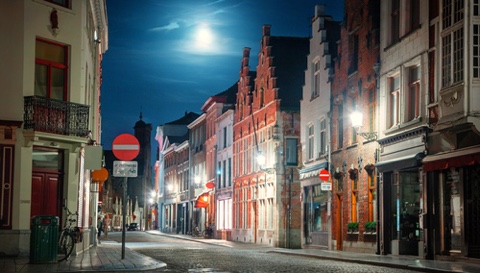
We interviewed Smart 50 Awards recipient Smartnodes for their work on the Smart Cities Through Smart Lighting project. Learn more about their implementation here:
Smartnodes proposes a new way to illuminate outdoor public spaces: light where and when needed. In contrast with a classic always-on lighting, or even with a reduced lighting during the off-peak hours (thus working all the time, and independently of traffic), Smartnodes wants to innovate by offering an on-demand lighting. That is, only when users are present. The proposed technology is treading new ground at several levels, and overcome many limitations of the current offer. By giving a decentralized solution and an autonomous decision at the luminary level, the energy savings are maximal and can reach up to 80%.
Smart Dynamic Lighting is evolving and fits right into the context of smart cities by also proposing remote control and telemonitoring services that go beyond the simple public street lighting service, while giving a lot of information for a best management of the traffic. Smartnodes’ solution is already implemented in numerous residential areas, pedestrian paths, industrial parks or carpooling parking’s. It is now deployed in Belgium, The Netherlands, France and Switzerland.
Q: What does the term ‘smart city’ mean to you, and how does your project contribute to a larger smart city vision?
A: Working on the outdoor public space, smart city means for Smartnodes a city understanding, monitoring and controlling its urban environment in a mindset of sustainability and friendly for its citizens. Smart street lighting is the natural entry point for smart cities hardware infrastructure and can address some specific problems.
Problem 1: energy saving without disadvantages
Outdoor Smart Street Lighting aims to adapt, in real time, lighting levels to traffic density and type of users (cars, cyclists and pedestrians). Without sacrificing security or visual comfort, Smart Street Lighting control contributes to minimize electrical energy consumption (up to 80%) and light pollution.
Problem 2: improved mobility and security at street level
Moreover, it gives you real-time access to traffic information, sampled under each post lamp opening the way to many applications by controlling traffic lights, pedestrian crossings, traffic and warning signs. All the information needed is available through the sensors of street lighting.
Problem 3: improve efficiency of the outdoor infrastructure maintenance
Thanks to appropriate gateways, smart street modules are able to communicate with internet, allowing tele-control, tele-monitoring and embedded software upgrades.
Problem 4: optimization and sharing of the street lighting network
A range of remote sensors, tied wirelessly to the street lighting network, provide a fully maintenance-free access to other parameters needed for smart cities administration. The first applications are aimed at: management of parking lots, optimization of waste collection, street sound level monitoring, atmospheric pollution monitoring, road icing conditions, etc.
Q: Why is the implementation of your project transformational in our current society?
A: Instead of addressing the different issues separately that a city is facing (energy saving, mobility, security, pollution, …) we aim to look transversely to these issues and to create an adequate architecture and a network of sensors sharing data and services among different services of the city administration.
Q: What advice did you receive along the way that helped you complete your winning project?
A: On the specific project in Wavre (Belgium), we got the full support of the city and the outdoor lighting operator. Their pioneer smart city vision and their enthusiasm to deploy Smartnodes technology were a powerful motor to complete the project.
On the regular basis, during the development of our technology, the inputs of the outdoor lighting operator were essential to understand how to enhance and improve our technology.
Q: What advice would you give a city community or a solution provider looking to implement a municipal-level project?
A: When replacing your street lighting infrastructure, think wider than just buying LEDs but take the opportunity to build a smart city infrastructure around it.
Q: What does it mean to you to win the Smart 50 Awards?
A: Smart 50 Award is for Smartnodes a recognition of its contribution to save energy and reduce pollution in the public space (CO2, light and noise pollutions) without sacrificing safety and security of the city’s users. We are delighted by this Smart 50 Award which encourages us to work harder on these matters. Based on our some field deployment in Europe, we are now looking to deploy our technology worldwide with the support of local partners. Smart 50 Award helps us to introduce our technology within North America.


